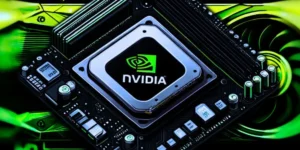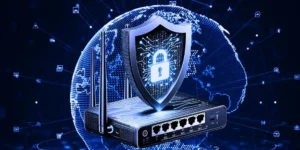Ethernet is fundamental to modern networking, providing reliable, high-speed connectivity for businesses and homes. As technology evolves, Ethernet cables have significantly improved to meet the increasing demands for faster data transmission and reduced latency. Understanding the differences between various Ethernet categories, from Cat5 to Cat8, is essential for choosing the right cable for specific networking needs.
The Evolution of Ethernet Cables
Ethernet cables have undergone multiple generations of improvements to enhance speed, bandwidth, and reliability. Each new category brings advancements tailored to modern network demands.
The Role of Ethernet in Modern Networking
Ethernet remains the backbone of wired networking, offering a stable and secure connection compared to wireless alternatives. Whether in corporate environments, data centers, or residential applications, Ethernet provides consistent speeds with minimal interference. Over time, new Ethernet categories have enabled higher data transfer rates and greater efficiency, supporting the growth of cloud computing, IoT devices, and media streaming services.
The evolution of Ethernet standards ensures compatibility across various devices and network infrastructures, allowing businesses to scale their operations without sacrificing performance. As bandwidth requirements increase, modern Ethernet standards are designed to meet these challenges effectively.
Key Differences Between Ethernet Categories
Ethernet cable categories differ primarily in speed, bandwidth, and shielding capabilities. While older categories like Cat5 provide sufficient speed for basic tasks, newer versions such as Cat8 are optimized for high-speed applications and data-intensive operations.
Each category builds upon its predecessor by improving frequency range and reducing signal degradation. For example, Cat6 offers better shielding and higher speeds than Cat5, making it suitable for more demanding networking environments. Understanding these differences allows users to select the right cable for their use case.
Why Upgrading Ethernet Cables is Important
Upgrading Ethernet cables is crucial to achieving better performance and ensuring compatibility with modern networking equipment. Older cables may bottleneck network speeds and impact overall efficiency, especially when high-speed data transfer is required.
As businesses adopt bandwidth-heavy applications such as video conferencing, cloud computing, and virtualization, the demand for faster and more reliable network infrastructure grows. Upgrading to newer Ethernet standards ensures a future-proof network capable of handling these evolving demands.
Cat5 and Cat5e: The Foundation of Ethernet
Cat5 and its enhanced version, Cat5e, were the first widely adopted Ethernet cables and set the foundation for modern networking.
Specifications and Performance of Cat5
Category 5 (Cat5) cables were introduced in the 1990s and provided data transfer speeds of up to 100 Mbps. Operating at a frequency of 100 MHz, they were commonly used in early home and office networks. Cat5 cables use unshielded twisted pairs (UTP) and support up to 100 meters of cable length without significant signal degradation.
Despite their reliability, Cat5 cables lack support for Gigabit Ethernet, making them less suitable for modern high-speed networking requirements. Their limited bandwidth and susceptibility to electromagnetic interference (EMI) have led to their gradual phase-out in favor of newer standards.
Improvements in Cat5e
Cat5e (Category 5 enhanced) was introduced as an improvement over Cat5. It offers speeds of up to 1 Gbps and a frequency of 100 MHz. It features better noise resistance and reduced crosstalk thanks to improved cable twisting techniques.
Cat5e remains widely used in residential and small business environments, providing a cost-effective solution for Gigabit Ethernet. While it lacks the higher frequency capabilities of newer cables, it still provides a reliable connection for general networking tasks such as web browsing and file sharing.
Use Cases and Limitations
Cat5 and Cat5e cables are ideal for basic networking applications, including connecting computers, printers, and routers in homes and small offices. They are also sufficient for streaming, VoIP calls, and standard web browsing.
However, their limitations become evident when dealing with high-bandwidth applications such as 4K video streaming or large-scale data transfers. In such cases, upgrading to Cat6 or higher is recommended for improved performance and future-proofing.
Cat6 and Cat6a: The Gigabit Ethernet Era
Cat6 and Cat6a cables introduced significant speed, bandwidth, and signal integrity improvements, making them ideal for Gigabit Ethernet applications.
Performance and Specifications of Cat6
Category 6 (Cat6) cables support speeds of up to 10 Gbps over distances of up to 55 meters and operate at a frequency of 250 MHz. They offer improved performance over Cat5e due to better shielding and reduced crosstalk, which enhances data integrity.
Cat6 cables are backward compatible with older standards, making them versatile for upgrading existing networks. Their improved shielding makes them less susceptible to EMI, making them suitable for environments with high electrical interference.
Advantages of Cat6a Over Cat6
Cat6a (Category 6 augmented) builds upon Cat6’s capabilities by offering data speeds of 10 Gbps over the full 100-meter cable length. With an operating frequency of 500 MHz, Cat6a provides enhanced signal quality and supports more data-intensive applications.
One of Cat6a’s key advantages is its superior shielding, which reduces crosstalk and interference from external sources. This makes it ideal for demanding environments such as data centers and industrial facilities where signal integrity is critical.
Common Applications of Cat6 and Cat6a
Cat6 and Cat6a cables are commonly used in enterprise networks, data centers, and high-performance computing environments. They are well-suited for high-bandwidth applications like video conferencing, cloud computing, and large-scale file transfers.
While Cat6 is sufficient for most office environments, Cat6a is recommended for future-proofing and ensuring compatibility with evolving networking technologies.
Cat7 and Cat7a: High-Speed Networking
Cat7 and its enhanced version, Cat7a, introduced further improvements in shielding and speed to support modern high-bandwidth applications.
Features and Performance of Cat7
Category 7 (Cat7) cables offer up to 10 Gbps speeds and operate at 600 MHz. They feature improved shielding with individual shielding on each twisted pair, significantly reducing signal interference and improving performance in electrically noisy environments.
Cat7 cables support higher data transmission rates over longer distances than Cat6a, making them ideal for advanced networking applications such as server rooms and media production environments.
Improvements in Cat7a
Cat7a (Category 7 augmented) improves performance by offering frequencies up to 1000 MHz, supporting future applications requiring ultra-high bandwidth. It also enhances data transmission reliability, making it suitable for environments with stringent performance demands.
Although Cat7a offers excellent performance, it is less commonly used due to higher costs and the availability of Cat8, which offers even better capabilities.
Use Cases in Professional Environments
Cat7 and Cat7a cables are often used in professional audio-visual setups, high-end gaming environments, and enterprise networks where speed and minimal interference are critical. Their robust shielding and high bandwidth make them a preferred choice for specialized applications.
Cat8: The Future of Ethernet
Cat8 represents the latest and most advanced Ethernet standard, designed to meet the demands of modern high-speed networks.
Key Features of Cat8
Cat8 cables support data speeds of up to 40 Gbps at frequencies of 2000 MHz, making them the fastest Ethernet cables available. They have advanced shielding techniques to ensure minimal interference and maximum signal quality.
Designed primarily for data centers and enterprise networking, Cat8 offers superior performance over short distances, making it ideal for backbone connections.
Applications of Cat8 in Modern Networking
Cat8 cables are used in high-performance computing environments, cloud data centers, and industries that require ultra-low latency and high-speed connectivity. They are particularly beneficial for server-to-server communication and high-speed data storage solutions.
Considerations for Deploying Cat8
Despite their superior performance, Cat8 cables are more expensive and require compatible hardware to utilize their capabilities fully. Therefore, they are best suited for specialized applications rather than general home use.
Conclusion
Ethernet cable technology has evolved significantly, with each new category offering enhanced performance, speed, and reliability. From the early days of Cat5 to the cutting-edge capabilities of Cat8, selecting the right Ethernet cable is crucial to optimizing network performance and ensuring compatibility with modern applications.









